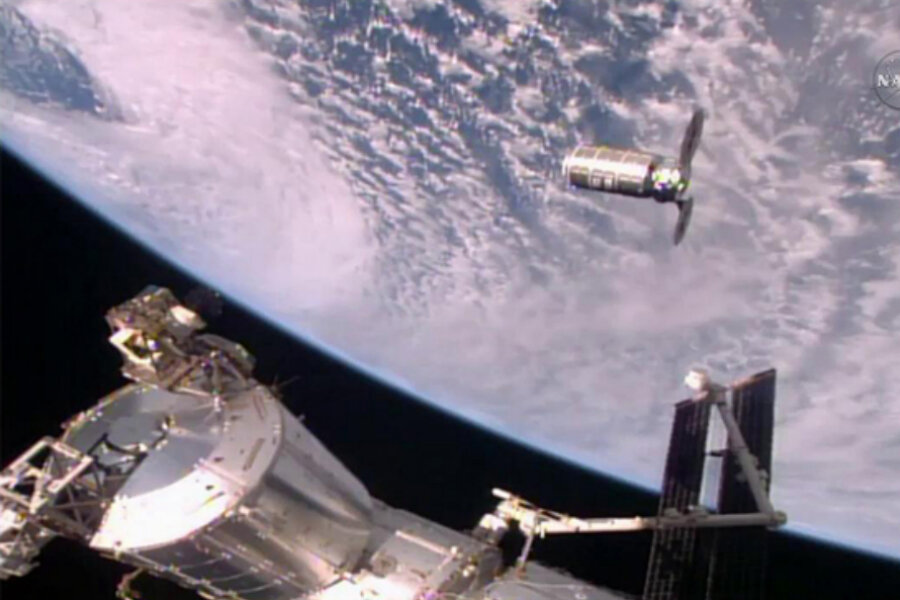Why ISS astronauts plan to set a cargo spacecraft ablaze
Loading...
On Sunday, the cargo spacecraft Cygnus docked at the International Space Station (ISS) to deliver supplies and research equipment. Next month, ISS astronauts will pack the craft with 4,000 pounds of trash and send it back toward Earth's atmosphere.
But first, they’re going to set it on fire.
It will all be part of a controlled, on-board experiment called Spacecraft Fire Experiment-II, or Saffire-II. The ISS crew will monitor the nine blazes remotely, in an effort to test the effects of microgravity and limited oxygen on flame size and the spread of fire. Researchers hope the data will lead to better fire safeguards on future space missions.
Here's NASA's explanation for the pyrotechnics:
Despite decades of experience in manned spaceflight, NASA has limited ability to study fires in microgravity because it is too dangerous. Studying fire in an empty cargo vehicle is a unique, safe way to obtain microgravity data on flammability and flame growth. Previous research investigated how flames develop and spread on one large sample. The Saffire-II investigation studies nine smaller samples, each about 2 inches (5 cm) wide by 10 inches (25 cm) long.
But that’s not the only fire the astronauts intend to start. Cygnus also delivered research equipment designed for studying so-called “cool flames.” In previous experiments, ISS researchers observed low-temperature fires with no visible flames. As part of the Cool Flames Investigation, scientists will examine how low-temperature combustion affects different fuels and additives in low gravity.
“The new experiments will include an investigation that looks at fuels that burn very hot at first, and then appear to go out, but actually continue to burn at a much lower temperature with no visible flames,” NASA wrote in a press release. “Data from this investigation could help scientists develop more efficient advanced engines and new fuels for use in space and on Earth,”
In August, researchers from the University of Maryland discovered another new type of fire: the “blue whirl,” so-named for the color and behavior of its flames. It produces less soot and lower carbon emissions than the usual yellow variety, and may help clean oil spills more efficiently.
The Christian Science Monitor’s Nicole Orttung reported:
Today, a popular technique for cleaning man-made oil spills is to corral crude oil into a thick layer on the water surface in order to burn it. Completing this process with the more efficient blue flame could mean releasing less smoke and fewer harmful particles into the surrounding environment.
But it’s not all fire and brimstone for ISS researchers – Cygnus delivered a slew of other research technologies, too. The Lighting Effects investigation will test a new lighting system, comprised of adjustable LEDs and a variable lighting schedule, in an effort to ensure that the ISS crew maintain regular working and resting cycles. Meanwhile, the Fast Neutron Spectrometer investigation will examine the effects of high-energy neutron radiation on astronauts and critical electronic systems.








